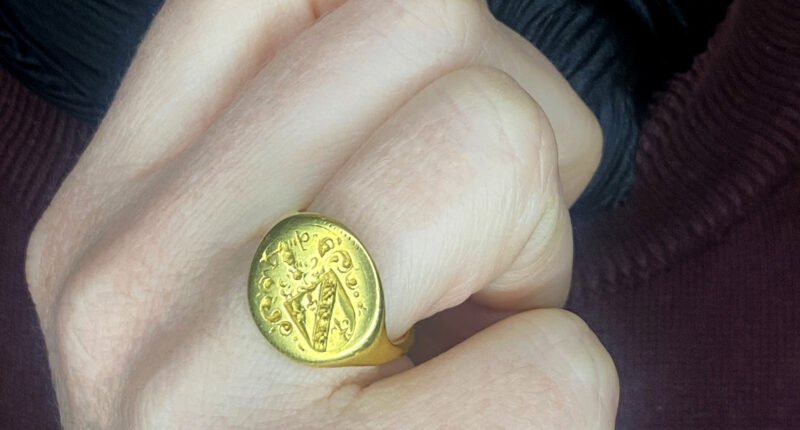A MAN has found £12,000 worth of hidden treasure in his back garden.
Retired teacher Richard McCaie, 71, was planting a Ceanothus bush at his home in Braunton, Devon when he stumbled across the amazing item.
In earth by his Grade II listed, 16th Century farmhouse, he discovered a 400-year-old gold signet ring.
The ring, which has the initials ‘H.C’ on it, is believed to have belonged to Humphrey Cockeram, who lived at the nearby Hillersdon Manor.
It also features a seal with his coat of arms, set on a 20mm thick band.
Humphrey was the head of the wealthy Cockeram family in 1620, which is when the ring dates from.


Richard found the ring in November 2012, while landscaping his garden.
He said: “I was very excited when I dug up the ring, which has now recorded on the Portable Antiquities Database.”
It is now being sold by London-based auctioneers Noonans and is expected to sell for £12,000.
Richard added: “We were amazed when Noonans told us the value and we are planning to use the proceeds from the sale to help our children.”
Most read in Money
Nigel Mills, a consultant at Noonans, confirmed the piece’s authenticity.
He said:The ring dates from 1620 and very likely belonged to Humphrey Cockeram of Cullompton in Devon.
“The ring bears a seal with the coat of arms of the Cockeram family and the initials ‘H.C’ behind.
“Humphrey was recorded as the head of the family in 1620 and lived at Hillersdon Manor in the early 17th century which is 42 miles east of where it was found.
“The family were great patrons of the church, and their name comes from old English ‘Coccan’ meaning dweller by the stream.”
The ring was disclaimed to the authorities and will be sold on March 14.
What to do if you find treasure
If you find anything that is legally defined as treasure, it must be reported to the local coroner.
The report must be made within 14 days of either the date of discovery or the date on which you realised the item could be treasure.
The penalty for not declaring treasure is an unlimited fine and up to three months in prison.
Items defined as treasure include metallic objects other than coins that are at least 10% precious metal by weight and are at least 300 years old.
For coins, any two from the same find that are at least 300 years old are defined as treasure.
Non-treasure items of cultural or historical interest can be reported to the Portable Antiquities Scheme in England or Wales.
There are slightly different rules in Scotland and Northern Ireland, which can be found on the devolved governments’ websites.
After you make your report, you’ll be contacted by either a local Finds Liaison Officer or museum curator, who will discuss next steps with you.












